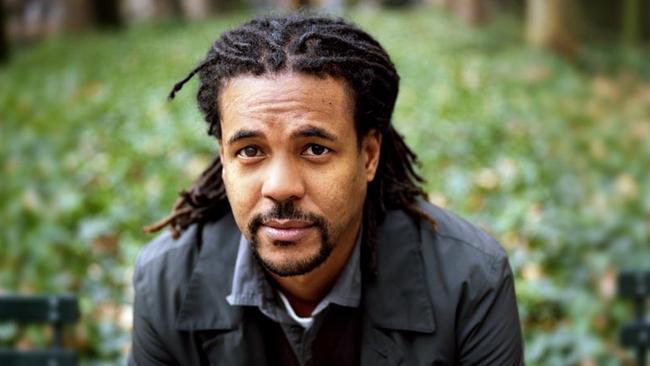Colson Whitehead reimagines Underground Railway to freedom
Instead of historical metaphor, Colson Whitehead depicts a real underground railway conveying slaves to freedom.

In American history the metaphorical Underground Railroad was a loosely organised system from the early 1840s for helping fugitive slaves escape from the “gallant south” to Canada or to free states. It was run by local groups of northern abolitionists, both whites and free blacks.
This railroad metaphor begat others. Escaping slaves were called passengers, those who guided them conductors, the homes where they sheltered stations.
That is the legend. The actuality may have been rather less formalised but when history conflicts with the legend, print the legend, as a character in John Ford’s film The Man Who Shot Liberty Valance proclaims.
Abolitionists used the Underground Railroad as a propaganda tool to dramatise the evils of slavery; southern slaveholders publicised it to illustrate northern infidelity to the fugitive slave laws.
The New York Times bestselling author Colson Whitehead has, in his new novel, The Underground Railroad, taken the historical metaphor and made it literal. Whitehead’s organising conception, his railroad, is a secret network of tracks and tunnels built beneath southern soil, surfacing in Georgia, South Carolina, North Carolina, Tennessee, Indiana and the north.
The novel’s central “passenger” is Cora, a nubile slave on a cotton plantation in Georgia where she is an outcast even among her fellow Africans. The book’s plot is testimony to her indomitable will.
“Every now and then a book comes along that reaches the marrow of your bones, settles in, and stays forever. This is one. It’s a tour de force, and I don’t say that lightly.” That is Oprah Winfrey on The Underground Railroad, and that won’t do Whitehead or his sales any harm, provided he resists pulling a Jonathan Franzen: the latter denounced Winfrey for promoting his The Corrections, and television at large, in an ill-judged gesture of elitism.
This is a brutal book, a violent book, a harrowing book. How could it not be, given the history it traces? By some irony it appears in the same month as a new television series of Alex Haley’s Roots, and a few months after the TV series The People v OJ Simpson. In recent months, police brutality towards, and murders of, African Americans in the US have been reported with distressing regularity.
Sequences in Whitehead’s novel recall Billie Holiday’s 1939 song StrangeFruit: “Southern trees bear a strange fruit / Blood on the leaves and blood at the root / Black bodies swingin’ in the southern breeze / Strange fruit hangin’ from the poplar trees …’’
Perhaps the most famous “underground” man in American letters is found in Ralph Ellison’s 1952 novel Invisible Man, a superb imaginative feat with its ironic refrain (and I quote) “Keep this Nigger-Boy Running”. We might recall that in the OJ Simpson series, a white TV executive worries: “Can we use that word on TV?”, even though it is spoken by an African-American attorney.
It may seem a curious cavil but Whitehead’s novel is only partly anti-metaphorical, part literally underground. For much of its above-ground action, a large part of the novel, the “metaphorical”, even allegorical, railway and the underground are forgotten, and the narrative settles into a superficial (“on the surface”), literal account of the social conditions of historical slavery. An allegorical habit of mind may be past its use-by date in the second decade of the 21st century.
Here is Cora at the beginning of her railroad journey north, and notice that she has her direction right, unlike Huck Finn and Jim in Mark Twain’s novel, where the boy and the freed slave are, in a crushing irony, travelling downriver, south.
The stairs led onto a small platform. The black mouths of the gigantic tunnel opened at either end. It must have been twenty feet tall, walls lined with dark and light colored stones in an alternating pattern. The sheer industry that had made such a project possible. Two steel rails ran the visible length of the tunnel, pinned into the dirt by wooden cross-ties … At that, the bench rumbled. They hushed, and the rumbling became a sound. Lumbly led them to the edge of the platform. The thing arrived in its hulking strangeness.
But above ground, in North Carolina, things are even stranger to Cora. “The country road was quiet, crowded on both sides by the forest canopy. She saw one shape, then another. Cora got out of the wagon. The corpses hung from the trees as rotting ornaments … One had been castrated …”
Strange fruit, indeed. This is but one of the countless scenes of man’s inhumanity to man in this moving novel — although the masters back then did not regard their black slaves as humans, but as chattels.
Don Anderson taught American literature at the University of Sydney for 30 years.
The Underground Railroad
By Colson Whitehead
Hachette, 306pp, $32.99



To join the conversation, please log in. Don't have an account? Register
Join the conversation, you are commenting as Logout